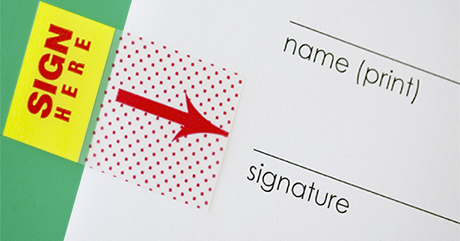The Do’s and Don’t’s of PCS Signatures
Signature Focus
The Physician Certification Statement (PCS), required by Medicare for all non-emergency transports, can confuse even the seasoned ambulance administrator and billing office. While the document itself can be confusing, determining the person who can properly sign can be an even more confusing scenario.

Requirement…
The Center for Medicare and Medicaid Services (CMS) requires that a PCS be obtained and maintained on file for every non-emergency, routine transport. The difference between the use of the PCS for repetitives versus non-repetitives lies in when the PCS is obtained (prior to transport for repetitives) and who can sign (physicians must sign repetitives).
Repetitives…
PCS’s for scheduled/repetitive transports can only be signed by a physician. Period!
M.D.’s or D.O.’s are the only health care professionals that can sign a PCS pertaining to a patient who is transported at least three times over a ten-day period or once per week for three consecutive weeks.
Non-Repetitives…
PCS’s for unscheduled/non-repetitive transports can be signed by the following health care professionals so long as that health care professional signing has first-hand knowledge of the patient’s overall condition. The person signing the PCS, other than a physician (MD or DO) can be a Registered Nurse (RN), Certified Nurse Specialist (CNS), Physician’s Assistant (PA), Nurse Practitioner (NP) or a “Discharge Planner.”
“Discharge Planner” Confusion
We often field questions about “Discharge Planners.” One of the common confusions surrounding PCS’s is how to define these persons.
A “Discharge Planner” is someone, typically in the institutional setting, that actually wears that title defining his/her place in the system and arranging for patient ambulance transports. For example, while the regulations do not allow for Licensed Practical Nurses (LPN’s) to sign a PCS, it is possible for an LPN that occupies the position of a hospital Discharge Planner to sign the PCS but not in the capacity of the scope of the LPN but rather within his/her role as a titled Discharge Planner. The same scenario would apply to a Social Worker.
Said another way, the LPN floor nurse who does not serve in the specific role as a Discharge Planner would not be acceptable to sign. However the LPN occupying a Discharge Planner job function would be an acceptable signor.
Therefore, “Suzy Smith, LPN, Discharge Planner” would be an acceptable signature for the PCS as long as that person’s title and job function is well defined and there is a proven history of that person occupying a specific “Discharge Planner” role. Likewise it is extremely important that the actual words “Discharge Planner” be typed or handwritten in proximity to the signature. The same would apply to a social worker or similar person that performs “Discharge Planner” functions as part of his/her job functions.
Method…
The health care professional’s signature must be handwritten, however the rules do allow for an electronic signature that is a computer produced handwritten signature. The acceptable electronic signature would be one where the health care professional signs using an electronic pen on a computer signature pad that generates the signature facsimile onto the PCS, instead of the doctor signing using an ink pen on paper.
Legibility
It is important that even the actual signature be vetted out by EMS personnel as proper or improper.
Signatures must be legible to be accepted. If a signature is illegible (viewing the signature does not yield the identity of the person signing, just by looking at it), then it is important that the name is always printed adjacent to the signature. The best way to cover this is to have the signing health care professional always print his/her name adjacent to any signature, legible or illegible, and have that person include his/her credentials, as well.
The health professional signing must sign using his/her full first and last name.
Illegibility
CMS rules do allow for what’s called “Signature Attestation” for those health care professionals that habitually sign with illegible signatures. However, this means that a master signature attestation statement or log must be maintained by the ambulance service showing the health care professional names with signatures on the page in order that they can be compared to an actual signature at some later time to prove the identity of the persons signing. This is a lot of work and requires continual record-keeping, not to mention the requirement of keeping such attestation sheets up-to-date to include both incoming and outgoing health care professionals.
Signature Dating
Finally, for this discussion it is important that the health care professional signing the PCS always date his/her signature. This is a must! The date that the person signs the PCS should be included adjacent to the signature and that area is separate from the date of service/transport listed at the top of the PCS document, as is the case for the common PCS documents that are widely used in the ambulance industry today.